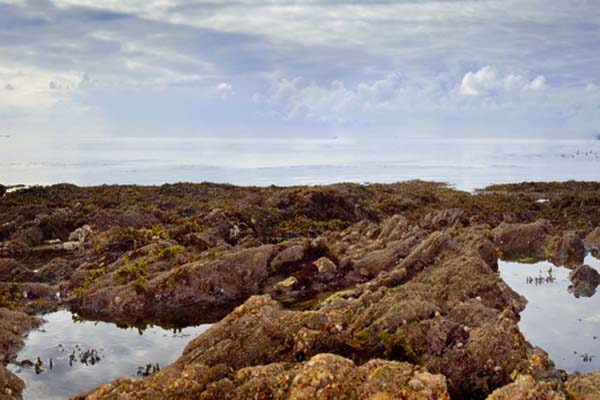Rockpooling
Sennen and Gwenver Beach are great for rock pooling – the kids love it! Armed with a fishing net, bucket, a small weight and line there’s loads of fun to be had…
When to go
The lower the tide, the more unusual things you will find in the lowest part of the shore.
Head out an hour or two before low tide, so that you have plenty of time to walk out with the tide and the most time at the lowest point before the tide comes in around you.

Equipment
Tough, waterproof footwear is important, as rocks can be slippery and sharp.
You’ll also need plenty of protective sun cream and sun hats, as the water can reflect the sun up at you.
Nets are generally discouraged as they can damage the ecosystems. It is better to collect animals with your hands so as not to hurt them. Pick up crabs by placing a finger and thumb on the top and bottom of the carapace.
Use clear buckets or Tupperware boxes, as these will allow you to view the creatures from below. If you find a cushion starfish, for example, you will be able to see the mouth and suckers on the underside, and the children can see how it clings to the wall of the bucket.
Make sure you change water regularly and keep the creatures separate so that they
Rock pooling tips
Look for patterns in the sand. This can indicate that creatures can be hiding just below the surface; have a careful dig and see what you can find. You might even find a bootlace worm, which is the longest creature in the world. It looks like a squiggly, brown, jelly-like mass.
Think as if you were a marine creature – they like shady, protected spots. Sometimes you can see blennies, pictured, seashore fish that can survive periods out of the water, stuck in tight crevasses with their bulbous eyes peering out. Have a good look under rocks. Many creatures are camouflaged or very small. Look out for the chiton, a mollusc that looks like a woodlouse with no legs; the broad-clawed porcelain crab, which measures just 3cm in diameter; or the brittle starfish, which is around 1-2cm wide, delicate, fine and feathery.
Look for mermaids’ purses. These are the egg cases of rays and sharks. They are black and leathery with tendrils on the end. If you find one, record it on eggcase.org and help scientists who are studying these creatures.